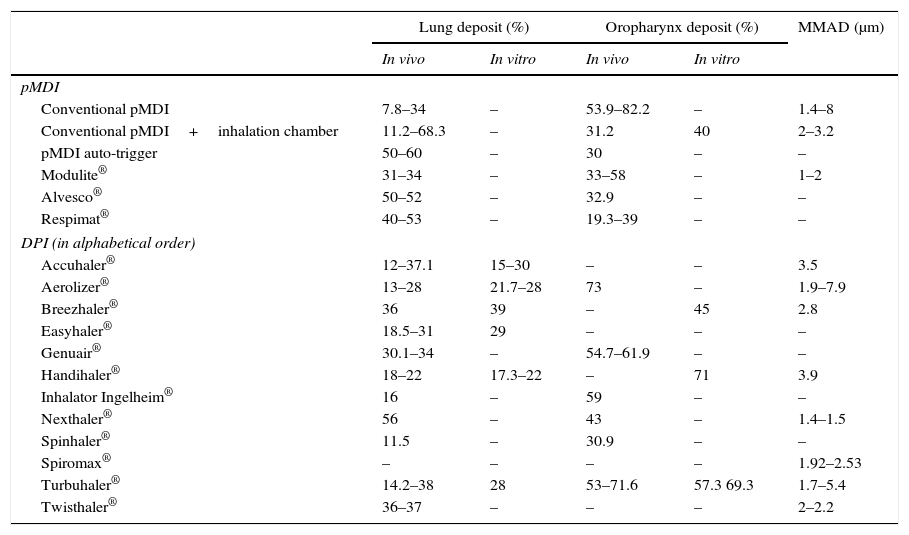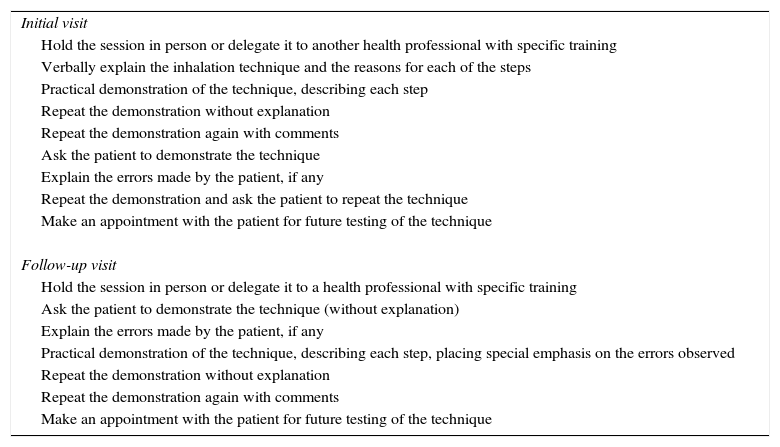Because of its advantages, inhaled administration of aerosolised drugs is the administration route of choice for the treatment of asthma and COPD. Numerous technological advances in the devices used in inhaled therapy in recent decades have boosted the appearance of multiple inhalers and aerosolised drugs. However, this variety also requires that the prescribing physician is aware of their characteristics. The main objective of the present review is to summarise the current state of knowledge on inhalers and inhaled drugs commonly used in the treatment of asthma. The review ranges from theoretical aspects (fundamentals and available devices and drugs) to practical and relevant aspects for asthma care in the clinical setting (therapeutic strategies, education, and adherence to inhalers).
La administración de fármacos aerosolizados mediante la vía inhalada, dadas sus ventajas, constituye la vía de administración de elección para el tratamiento del asma y de la EPOC. El desarrollo tecnológico experimentado en las últimas décadas ha propiciado la aparición de múltiples inhaladores y fármacos aerosolizables. Tal variedad obliga al facultativo que los debe prescribir a conocerlos en profundidad. La presente revisión tiene como principal objetivo resumir el estado actual del conocimiento sobre inhaladores y fármacos inhalados habitualmente empleados en el tratamiento de mantenimiento y de la exacerbación del asma. El texto aborda desde aspectos teóricos (fundamentos, dispositivos y fármacos disponibles), a otros más prácticos y de relevancia en la asistencia clínica diaria del asma (pautas terapéuticas, educación y adhesión a los inhaladores).













